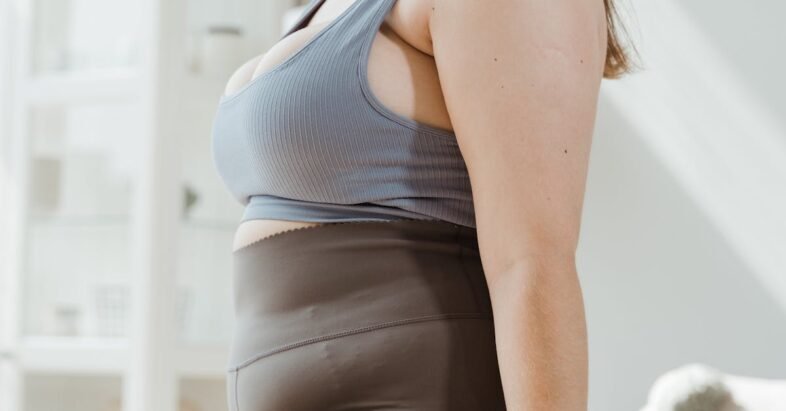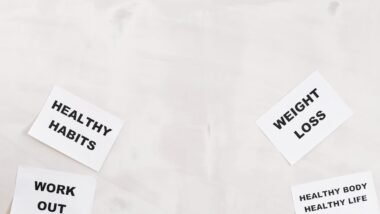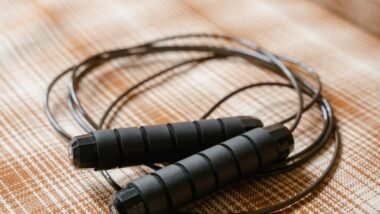Age and Its Effect on Fat Loss
As women age, their bodies undergo a variety of changes that can affect fat loss. Hormonal fluctuations, particularly during menopause, can lead to an increase in body fat percentage and a redistribution of fat from the lower body to the abdominal area. Reduced estrogen levels contribute to this shift, making it more challenging for women to maintain a healthy body composition. Additionally, metabolic rate tends to decrease with age, resulting in fewer calories burned at rest.
These physiological changes highlight the necessity for tailored approaches to fat loss as women age. Understanding how age impacts metabolism and fat distribution can empower women to make informed decisions regarding their diet and exercise routines. Strategies that include focusing on muscle retention through strength training and incorporating more nutrient-dense foods can help mitigate the effects of aging on fat loss. Addressing these factors can lead to improved outcomes in managing body fat over time.
Have a peek at this blog for further readings.
How Aging Changes Fat Distribution
As women age, hormonal changes play a significant role in how fat is distributed in the body. Menopause often leads to a decrease in estrogen levels, which can result in increased abdominal fat. This shift alters the typical fat distribution pattern seen in younger women, who often store fat more evenly throughout their hips and thighs.
Additionally, metabolic changes associated with aging can affect fat loss and distribution. Muscle mass tends to decline, leading to a slower metabolism. This reduction in muscle can cause the body to retain fat more easily, particularly in the midsection, making it increasingly important for older women to adopt healthy lifestyle choices that promote balanced nutrition and regular physical activity.
Importance of Nutrition in Fat Loss
Nutrition plays a pivotal role in determining how efficiently the body can lose fat. A balanced intake of macronutrients, including carbohydrates, proteins, and healthy fats, is essential for fueling the body while promoting fat loss. Consuming nutrient-rich foods not only helps maintain energy levels but also supports overall health, ensuring that the body functions optimally during a weight loss journey. Proper hydration is equally important, as water aids metabolic processes and helps regulate appetite.
Implementing a sustainable diet is crucial for long-term fat loss success. This often means avoiding restrictive diets that can lead to temporary weight loss but are difficult to maintain. Instead, focusing on portion control and incorporating whole foods can create a healthier relationship with food. Foods that are high in fiber, such as fruits, vegetables, and whole grains, provide satiety and can help curb overeating. By prioritizing nutrition, individuals enhance their chances of achieving and sustaining their weight loss goals.
Foods That Support Healthy Weight Loss
Eating a balanced diet rich in whole foods can significantly support healthy weight loss. Incorporating fruits and vegetables provides essential vitamins, minerals, and fiber. These nutrients enhance satiety, helping to control hunger while promoting overall health. Lean proteins, such as chicken, fish, and legumes, also play a crucial role in weight management. They help maintain muscle mass and boost metabolism, particularly when combined with regular physical activity.
Healthy fats, found in sources like avocados, nuts, and olive oil, can be beneficial in a weight-loss plan. These fats can help improve heart health and provide sustained energy, reducing the need for frequent snacking. Whole grains, such as quinoa and brown rice, offer complex carbohydrates that stabilize blood sugar levels while keeping one feeling fuller for longer periods. By focusing on these nutritious options, individuals can create a sustainable eating pattern that supports their weight loss goals.
Role of Exercise in Fat Loss
Physical activity plays a crucial role in the process of fat loss. Engaging in regular exercise increases energy expenditure, which helps burn stored fat. Resistance training and cardiovascular workouts are essential as they promote muscle growth and improve metabolic rate. The more muscle mass a person has, the more calories the body burns at rest, leading to more effective fat loss over time.
Different types of workouts can significantly enhance fat burning. High-Intensity Interval Training (HIIT) is particularly effective, allowing individuals to maximize calorie burn in shorter periods. Moderate-intensity steady-state cardio also contributes to weight loss by promoting an overall caloric deficit. By combining various forms of exercise, individuals can tailor their routines to meet their specific goals and improve their overall health and well-being.
Types of Workouts that Enhance Fat Burning
High-intensity interval training (HIIT) is one of the most effective workout styles for burning fat. This approach involves short bursts of intense exercise followed by brief recovery periods. Such a format elevates heart rate significantly and increases calorie expenditure during and after workouts. Engaging in HIIT can boost metabolism, making it a popular choice for those seeking to shed excess body fat.
Strength training also plays a crucial role in enhancing fat loss. Building muscle mass through resistance exercises increases resting metabolic rate, which means more calories are burned even while at rest. Incorporating compound movements, such as squats and deadlifts, targets multiple muscle groups and encourages higher calorie burn. Together with a well-balanced diet, these workouts can dramatically improve overall body composition.
FAQS
Which body part typically loses fat first in women?
Women often notice fat loss first in areas like the face, neck, and upper body, including the arms and chest. However, individual experiences may vary based on genetics and body type.
Does age affect where women lose fat first?
Yes, age can influence fat distribution and loss. As women age, hormonal changes may lead to a shift in where fat is stored and how quickly it is lost, often resulting in a slower fat loss process overall.
How important is nutrition in determining where fat is lost?
Nutrition plays a crucial role in fat loss. A balanced diet that supports healthy weight management can help target overall fat loss, though specific areas may still vary based on individual factors.
Can exercise impact which body parts lose fat first?
Yes, certain types of workouts can help enhance fat burning in specific areas. For example, strength training may help tone muscles in targeted regions, while cardiovascular exercises can promote overall fat loss.
Is it possible to spot-reduce fat in specific areas of the body?
Spot reduction is largely considered a myth; while targeted exercises can strengthen certain muscles, they do not solely lead to fat loss in those areas. Overall fat loss through a combination of diet and exercise is typically more effective.
Related Links
quick weight loss tips for females
What is the fastest way for a female to lose weight?
Can a woman lose 20 pounds in a month?


